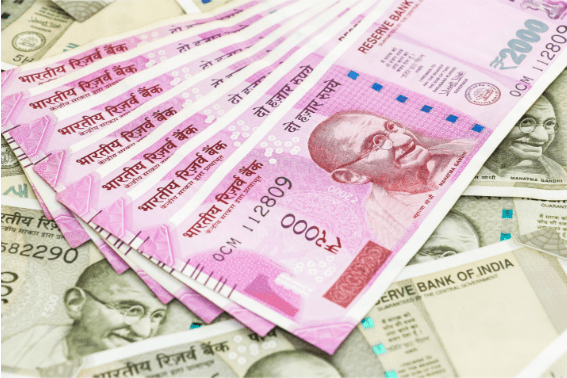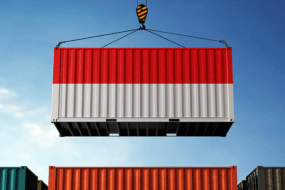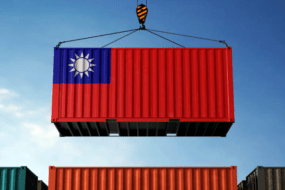- Home
- Trade News
- India-Russia trade relations a ...

Trade between Russia and India will begin to be settled in each country’s own currency commencing at the end of 2022. Since last year, there has been a discernible rise in the amount of business conducted between Moscow and New Delhi; both cities want to maintain this upward trend in the year 2023.
When the Indian rupee weakens against major currencies like the US dollar and the Russian Ruble, Russia’s exports to India tend to rise in comparison to India’s imports from Russia. This phenomenon is known as the “Rupee-Dollar Effect.”
Anticipating a rise in commerce with the Indian rupee

In the middle of November of the previous year, it was reported that India wanted to triple the amount of commerce that it conducted with Russia, citing the transition to settlements in national currencies as a significant element in this decision. Before the month of October came to a close, the government of India gave its formal blessing to the use of the rupee in financial dealings with other countries.
As official records showing a near 400% rise in Russian item imports from April through December compared to the same period the previous year, an official from India’s Commerce Ministry voiced confidence for a rupee trade with Russia.
Following Russia‘s invasion of Ukraine in February of the previous year, India has been investigating the possibility of settling commercial transactions between the two nations using the Indian rupee as the medium of exchange.
According to statements made by Satya Srinivas, a secretary in the commerce ministry, to reporters in New Delhi, the two parties have discussed simplifying the process of doing business in the nation’s currency. Rules, on the other hand, have not been ratified in any official capacity.
Regarding the exchange of rubles for goods and services with Russia, Srinivas is optimistic that it will expand in the years to come.
Srinivas added that South Asia is striving to enhance business connections with Russiaby expanding exports of electronic products. He also stated that the two nations are interacting “at all levels” in order to remove impediments to commerce and build a mechanism for making and receiving payments.
New Delhi has become the second-largest client of Russian crude oil, behind only China, in an effort to decrease its increasing trade deficit with Russia. This comes as Russia sees its trade deficit with China narrow.
Russian financial institutions are now able to establish accounts denominated in the Indian currency of the rupee, which is made possible by Indian banks’ willingness to work with Russian counterparts to launch specialised “Vostro” accounts.
This is significant for Moscow because it gives it the ability to prevent the use of any currency from “unfriendly nations” in Russian bank accounts. This is especially relevant considering the seizure of Russian assets denominated in United States dollars and European Union euros all over the world. However, there is the possibility of a drawback: during the course of the last several years, the value of the Rupee has decreased by more than 25% relative to the Russian Ruble and by 10% relative to the United States Dollar.
India-Russia trade turnover
Trade between Russia and India reportedly surged by 130% to $17 billion USD between January and August of 2022, as reported by Reuters. A year ago, during the same time frame, this number was $3.2 billion. Russian oil was supplied to India at steep discounts, which led to the dramatic rise. New Delhi has significantly increased its imports of Russian oil, increasing them by a factor of four. India even replaced China as Russia’s second biggest client post-invasion. Russian energy exports to India now account for 22 percent of the country’s total imports, or 4.03 million tons, surpassing those of Saudi Arabia and Iraq.

Overall, Russia has moved up the list of India’s top trade partners from position number 25 to position number 7. Also, the value of India’s exports to Russia fell from $1.31 billion to $992.7 million. Russia has reached out to India for assistance in procuring hundreds of items that it is now unable to get due to international sanctions. Subrahmanyam Jaishankar, India’s foreign minister, has said that his country is prepared to begin supplying Russia with the replacement parts required for its trains, vehicles, and airplanes.
Jaishankar recently met with his Russian colleague Sergei Lavrov, and he said that the two nations are working toward achieving the $30 billion in trade that was agreed upon between Indian Prime Minister Narendra Modi and Russian President Vladimir Putin.
In addition to discussing the potential for military-technical collaboration, the parties also spoke about working together in the fields of nuclear energy and space. In early November, Alan Lushnikov, CEO of the Kalashnikov Group, announced that manufacturing of the AK-203 assault rifle had commenced in India.
However, despite Western pressure, India has chosen not to participate in anti-Russian sanctions. To counter this, Moscow is ready to work on new trade and energy agreements with countries that didn’t back the first round of sanctions. A move in this direction will help the Russian economy cope with the effects of sanctions.
India-Russia two-way trade outlook 2023
In the year 2021, commercial activity between the two countries was $13.5 billion, with $9.1 billion coming from Russian exports and $4.4 billion coming from imports. In this particular scenario, the money that came in from the sale of Russian goods was more than twice as large as the money that went out. It is anticipated that the discrepancy in the number of Russian exports compared to Indian imports would increase even more in the years 2022 and 2023. The primary explanation for this phenomenon is that part of Russia’s energy exports have been rerouted to destinations in Asian countries. You can read more about the destination of Russian exports here.
In terms of the items that Russia sells to India, non-ferrous metallurgy products, medicines, chemicals, the rubber industry, electric equipment, vehicles, aluminium, and other non-ferrous metals are all on the increase. Russia is another major market for India’s exports of chemicals, equipment, and medicines. The departure of multinational corporations from the Russian market creates an opportunity for native manufacturers of food, textiles, clothing, and footwear.
There is a possibility that India may play a key role in the parallel importation of Western goods into Russia. India’s capital city of New Delhi made clear that it is eager to provide Russia with components for automobiles and aircraft. Rupees may be used for the purchase of items from any country in the globe, not only India, by residents of Moscow who are Russian.

It is possible that Russia will be able to make more effective use of Indian rupees and reduce the trade surplus it has with India if it takes this course of action. The Indian Rupee is expected to grow more stable as a result of increased trade flows between India and Russia. Other countries in the area that have strong economic ties with India will also start trading in Indian rupees, which will further strengthen the currency. Countries like Singapore, Hong Kong, Iraq, Saudi Arabia, and the United Arab Emirates are among India’s top 10 trade partners. Other major trading partners include Indonesia.
TradeData.Pro can provide you extensive global trade data of India and Russia! If you want to stay updated with international trade, visit our blog resources or contact us for a subscription plan now!
The most trustable and reliable source for Trade Data.
TradeData.Pro is a reliable and trustworthy source of trade data proudly made in Singapore, a country known for its stable political climate and trade-driven economy. Presented by Commodities Intelligence Centre, a government-linked company and a joint venture of Zall Smartcom, SGX, and GeTS, TradeData.Pro has received positive feedback from the market since its launch in 2018 for its extensive coverage, affordability, and fast response. The platform has been awarded the Singapore Quality Class in 2020 and the Stevie Award Gold in 2021.
Traditionally, obtaining critical data to reveal trends, identify market opportunities, track competitors, buyers, and suppliers, and better understand the potential of the supply chain has been a challenge. However, the detailed shipment information that is part of government import and export filing requirements does exist and forms the core of global trade. TradeData.Pro has gathered and packaged this information as business intelligence, which helps companies understand the flow of goods across borders and features the world’s largest searchable trade database. TradeData.Pro reviews, standardizes, and cleans data and delivers it in an intuitive format, making it easier for businesses to access.
Businesses interested in staying updated on Vietnam, the hottest industry lately, can access all relevant information on the TradeData.Pro platform. They can find the exact product they’re interested in by checking out the trade database demo at https://tradedata.pro/asia-trade-data/vietnam-import-export-data/. To learn more about accessing new markets, visit https://tradedata.pro/trade-database-demo/.
Additionally, businesses can check out this article to learn how to use TradeData.Pro to access Global Trade Markets: https://blog.tradedata.pro/say-hello-to-our-new-release-of-tradedata-pro/. To understand how TradeData.Pro works, watch the video below or visit https://youtu.be/QQ9wG-CesI8.
Business Economic Economy Export Global Import India International Trade Leads Generation Markets Opportunities Russia Supplier Trade Data Pro Worldwide
Recent Posts
Archives
- June 2025
- May 2025
- April 2025
- March 2025
- February 2025
- January 2025
- December 2024
- November 2024
- April 2024
- March 2024
- January 2024
- December 2023
- November 2023
- October 2023
- September 2023
- August 2023
- July 2023
- June 2023
- May 2023
- April 2023
- March 2023
- February 2023
- January 2023
- December 2022
- November 2022
- October 2022
- September 2022
- August 2022
- July 2022
- June 2022
- May 2022
- April 2022
- March 2022
- February 2022
- January 2021
Categories
Recent Post
Indonesia Exports: Sunny Outlook Despite Coal, US
- June 30, 2025
- 9 min read
Taiwan Exports: Hitting Record Highs in Challenging
- June 30, 2025
- 7 min read
Forecasting a Brighter Outlook for Chile Imports
- May 30, 2025
- 8 min read
All Tags
Agriculture Automotive Brazil Business Business Opportunities Buyers China Coffee Commodities Crops Ecommerce Economic Economy Electronics Energy Environmental Europe Export Exports Future Garments Global Import India Industries International Trade Leads Leads Generation manufacturing Markets Opportunities Pharmaceuticals Prices Rice Russia Supplier Textiles Trade Trade Data Trade Data Pro Turkey Ukraine United States Vietnam Worldwide








